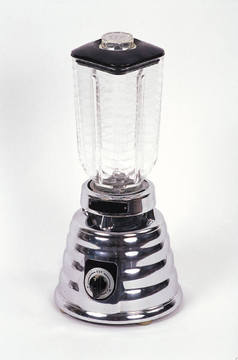 Many home owners have two mortgages on their properties. A first mortgage and a second mortgage that may either be fixed or a home equity line of credit. Do you know what your effective rate is? Basically, this is if you factor in what your paying on both mortgages, and then figured out what your interest rate is on your payment.
Many home owners have two mortgages on their properties. A first mortgage and a second mortgage that may either be fixed or a home equity line of credit. Do you know what your effective rate is? Basically, this is if you factor in what your paying on both mortgages, and then figured out what your interest rate is on your payment.
Here’s how to determine what your “blended rate” is:
- Take your current mortgage balances and multiply that times your interest rate. This equals your interest expense.
- Add both mortgages interest expense together.
- Add both mortgage balances together.
- Divide the total interest expense by the total mortgage balances. This provides you with your blended (of effective) interest rate of both mortgages.
For example:
- 1st Mortgage with a balance of $200,000 x 6.25% interest = $12,500. 2nd Mortgage with a balance of $50,000 x 8% interest = $4,000.
- $12,500 + $4,000 = Total interest expense of $16,500
- $200,000 + $50,000 = Total mortgage balances of $250,000
- $16,500 (total interest) divided by $250,000 (total mortgage balances) equals an blended rate of 6.6%.
This formula can be used on new or existing mortgage scenarios. As you pay down your mortgages, the blended rate will change. Especially if you’re paying extra towards a second mortgage with a higher rate.
Sometimes homeowners opt for a second mortgage instead of refinancing their first, hanging on to what they feel is a favorable rate. This may be the best option, depending on if they feel they’re going to be coming into cash to pay off the higher interest rate second mortgage, or if they are disciplined enough to pay additional towards the principle on the second to reduce the term. There may also be tax advantages for not refinancing the first mortgage as well (always check with your CPA).
If a borrower is getting a higher interest rate second mortgage because they don’t want to “touch” their first mortgage with a lower rate, but they do not have intentions or means of paying down or eliminating the second mortgage, reviewing what the actual effective rate or blended rate may be very well worth considering in order to determine what the mortgage strategy should be.
There are also many other factors to consider when selecting a mortgage such as how long one plans on retaining the property and what they predict their incomes will do in future, etc. This is why it’s important to review your mortgage and financial goals with a Mortgage Professional.
If you are considering refinancing or buying a home located anywhere in Washington state, I’m happy to help you! Click here for a no-hassle mortgage rate quote.










This message was emailed to me, compliments of Gary from Baton Rogue. Thanks again, Gary!
There’s a much more easy way for your customers to calculate their blended rate on both liens on their properties…
If they’re in an 80/20, 75/25, no matter what…
Let’s say our customers have a 7.99% 1st lien @ 80% LTV, and a 2nd lien @ 20% LTV for 100% CLTV.
7.99 (multiplied by .8) = 6.392
9.99 (multiplied by .2) = 1.998
6.392 + 1.998 = 8.39% blended rate.
This will work in a 75/25 by just using .75 instead of .8…You get the idea…
Giving customers or consumers (heck, even fellow Loan Officers!) too many steps and making things complicated usually adds to the frustration process many of them worry with too much as it is.
I thought this might be helpful to you in the future…
Gary M. O’Neal, Jr.
Benchmark of Baton Rouge
I call it WACC-ing a borrower
Ok I bought a home in May 07. 100% financing. 80/20 on first and second mortage. I paid $69000 for home with 30 year term. My first mortage I owe $54,000 at 6.25% on second mortage $9500 @ 9% variable for 5 years it will increase..
Would it make since for me to refinance both into 1 loan at 5% for 25 years?
Is their a waiting period for refiance my mortage contract allows no penallty for refinance?
Sonya, whether or not you can refi will depend on what the current value of your home is and what your current credit scores are. Many areas are being considered “soft” or “declining markets” which means that banks are reducing the allowed loan to value they will lend in. They want more equity to protect their investment (the mortgage) against further depreciating values. Even in areas where the housing markets are still strong, the loan to value limits have been cut back.
Regardless, I encourage you to locate your NOTE from your mortgage (it’s with the stack of papers you received when you went to sign your loan papers). The note will tell you if you have a prepayment penalty or not and how long the waiting period is. You don’t have to wait, however you will need either enough equity or cash to pay the penalty if the prepay period is not over.
Good luck!